Clean locomotive
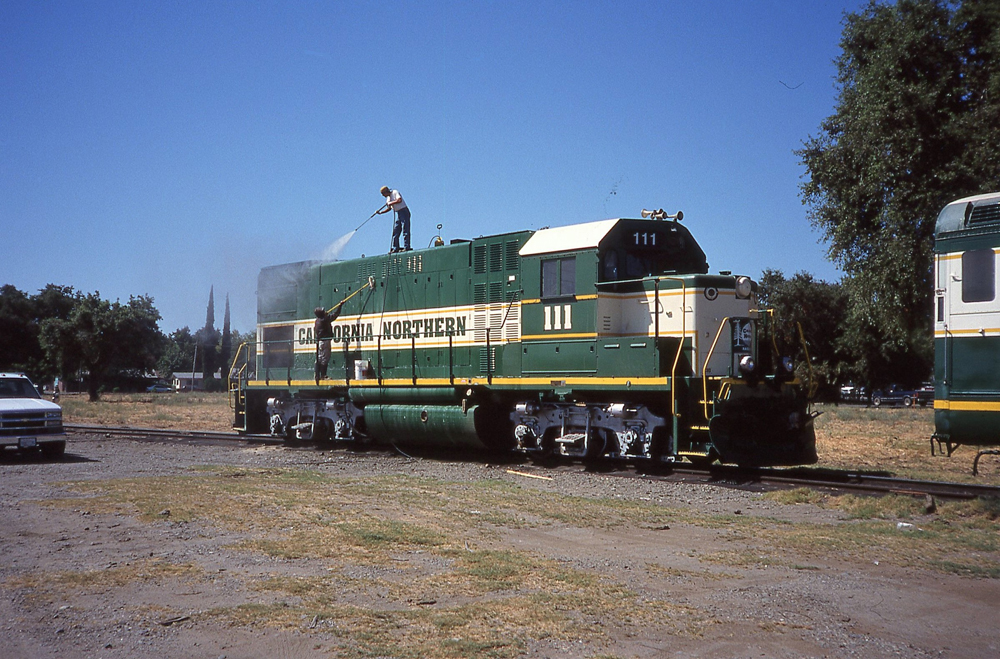
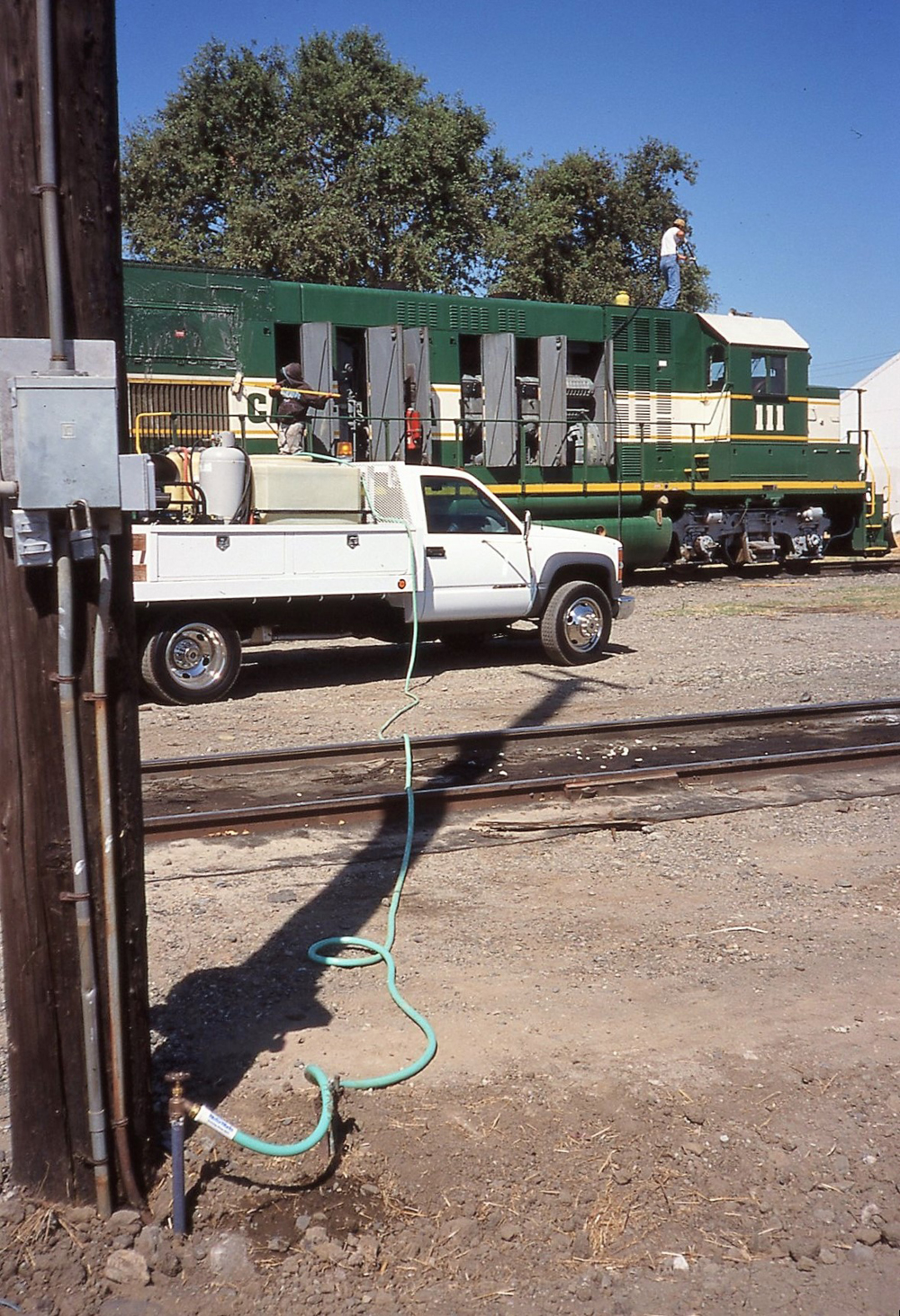
Finding a locomotive being washed and cleaned before it went to work left me in awe. As a railroad, one of the ways to give your customers with a good impression is taking care of your locomotives. That was the mantra of the original California Northern Railroad management when it began on cast-off Southern Pacific lines in Northern California in the 1990s.
In the Sacramento area on business, I made a detour to a local California Northern yard to possibly get a photo of one of their units. Besides seeing a different railroad than I would find at home in Southern California, I was also intrigued by their motive power — a handful of 1,500-hp, four-axle EMD GP15-1s that began life on the Chicago & North Western, and a couple of six-axle EMD SD9s.
Driving around in the area searching for the railroad, I soon spied GP15-1 No. 111. I was in luck. The unit was in decent light. As I was getting my camera, a flatbed truck drove up to the unit and two men got out. They were a cleaning crew!
On the back of the truck was a generator, power cords, and scrubbing brushes. As one of the workers plugged the hose into a nearby water connection in the yard, the other began unreeling the hose and started washing the unit. The other worker was right behind him.
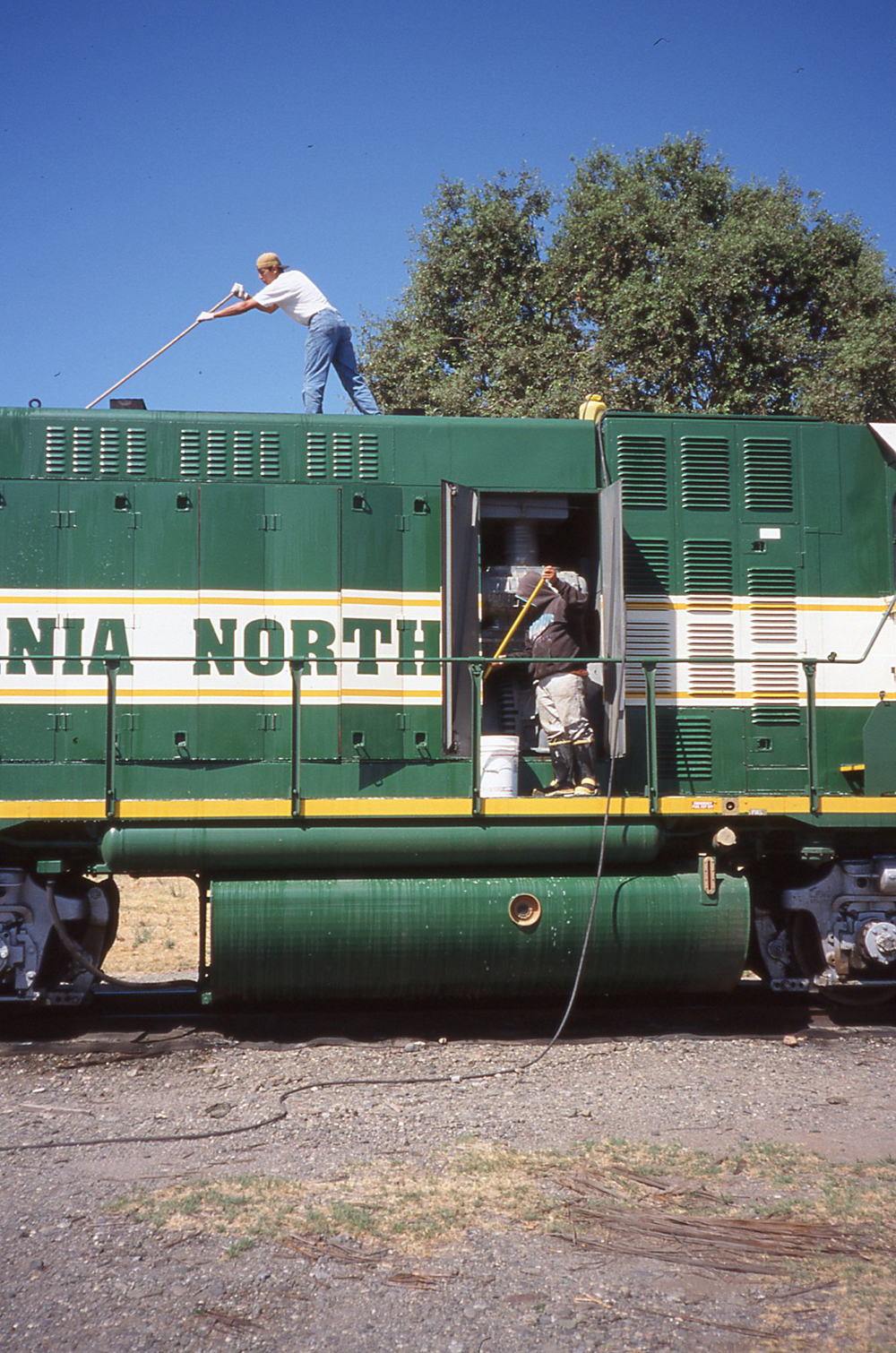
Soon, one guy was on the top of the locomotive, while the other was using a broom on the walkway. What really surprised me next was when the long-hood doors were opened, and the two men began cleaning everything inside. About 30 minutes later they were done. They retrieved their ladders, retracted the hose, stored the brooms, and unplugged from the water source. A few minutes later they hopped backed into the truck and left, with only the wet ground around the No. 111 showing, briefly, they had been there.
In an overall view of the world, my little encounter that morning would have hopefully bagged a photo to add to my collection. But the no-nonsense cleaning crew smartly going about their work made all the difference in the world. I got to watch a railroad getting ready for the day’s work.
As I was heading back to the airport that afternoon, my thoughts went to my car back home. Maybe it was about time I gave it a bath. At least the outside of it.
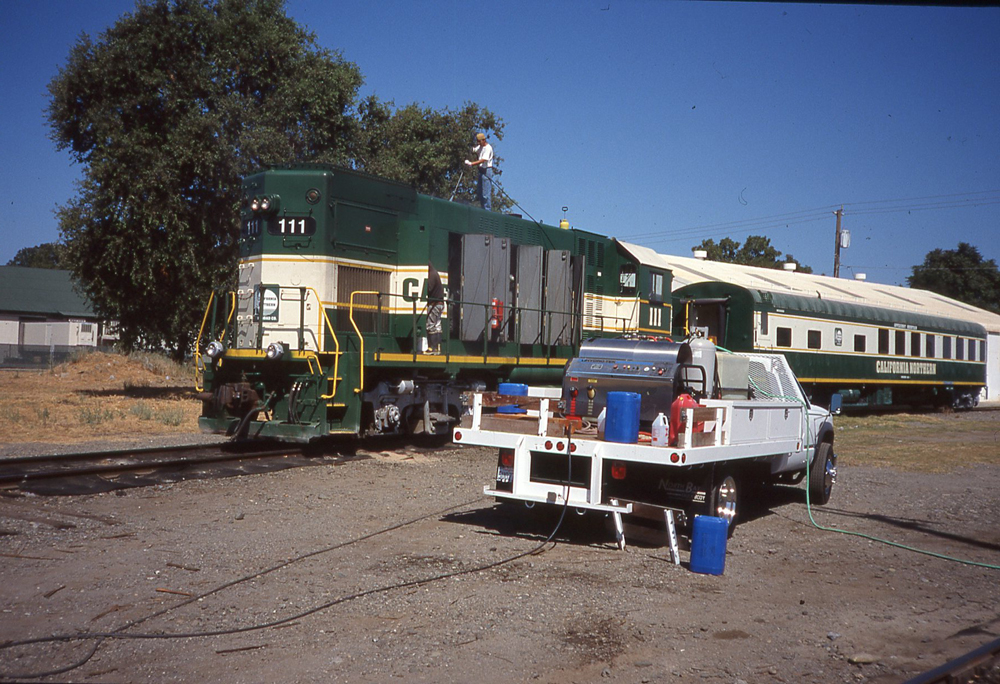








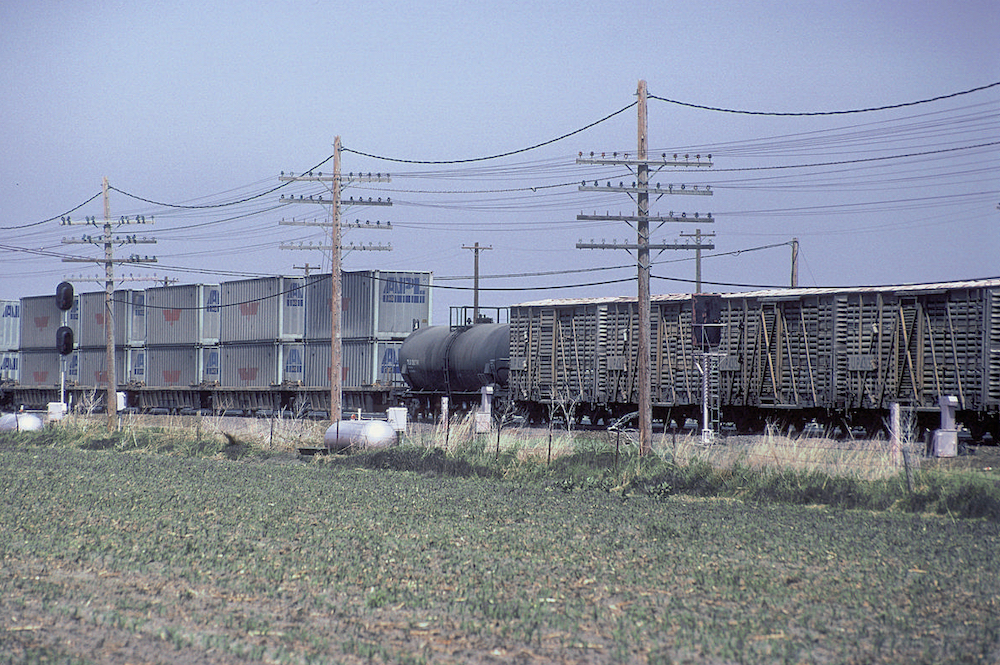
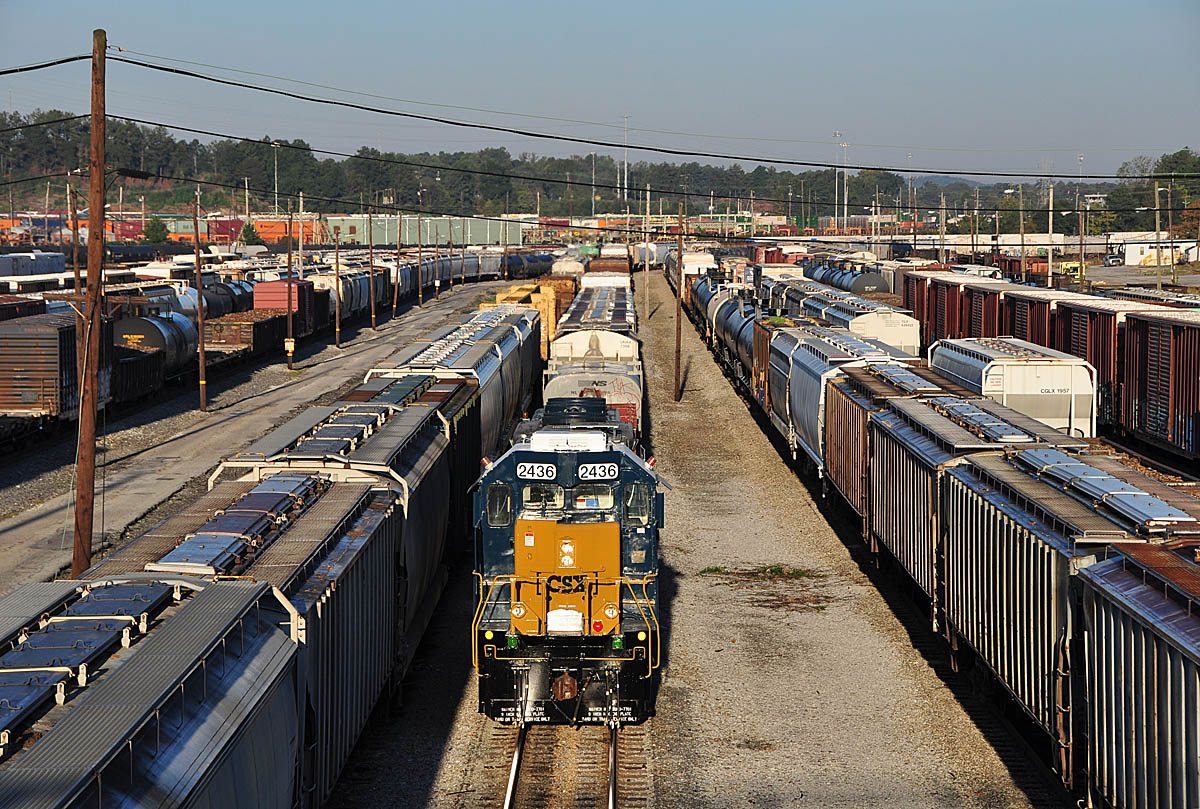




Great little article, food for thought for any layout, thank you
I knew I should have taken shop class in school. Sorry for the error on the hose. So noted.
Very interesting story. Great photos. While the posted caption for the David Lustig’s first photo of the locomotive wash job article reads, “When the truck pulled up, one of the men connected the generator on the flatbed to a power pole in the yard,” the photos clearly show otherwise. The connection at the power pole is, in fact, a simple garden hose connected to a water spigot at ground level which runs to the power washer compressor on the flatbed truck. And if the wash truck has its own generator, why would they need to plug into an AC power receptacle at the power pole? It would seem the truck’s electrical generator in-fact powers the power washer’s compressor. The photo does not show an electrical extension cord plugged into the pole-mounted weatherproof receptacle as suggested. Rather, the last wide-shot photo shows a long, looping water hose running from the rear end of the wash truck down to ground level, then on the ground, behind the right long-hood door and then to the roof of locomotive 111. Note to writers and editors, always check for continuity between photo cutlines and subjects displayed. This was an extremely rare TRAINS editing error. Richard Taylor, Bonaire, GA.
Wow … A couple of people got up on the wrong side of the bed this morning! A misuse of words, but was it so bad? I’m sure folks figured out it was a pressure washer, hot water or not. It’s hard to make out an electrical cord going to the truck to run a heating element.
Wrong side of the bed or right side makes no difference. Yes, this was a happy story because one railroad, albeit small, cares about cleanliness of its equipment. But the reporter was lazy (he apparently never talked with the two guys scrubbing the locomotive) and ignorant (he doesn’t know the difference between a water hose and an electrical cord?). Mr. Editor, please do your backstopping job.
I believe that this RR is connected in some way to the California – Arizona RR. They have, or at least had the exact same color scheme.
Although I am from N.J. I had the opportunity to visit The California – Arizona RR in Parker, Arizona a number of years ago. I was totally impressed. Not only were the locomotives spotless, but the yard was also immaculate; perhaps the neatest and cleanest railyard I had ever visited !
Yes.
The author used several curious terms by which to describe the action.
He wrote that the truck carried a “generator,”
which the workers plugged into a power source on a nearby pole,
and that they unreeled a hose and started using “brooms” to wash the locomotive.
Why did they need to plug a “generator” into a power source?
How did the “generator” contribute to the washing?
And why did the guys use “brooms”?
Or did they perhaps use not a generator but rather a pressure washer
and a pair of not brooms but rather long-handled brushes?
What’s so hard about using correct terminology,
especially in a magazine devoted to a set of technical subjects?
One might wonder why no editor corrected those errors in word choice.
Hmmm ….
Exactly…the second photo clearly shows a hose from the truck connected to a tap beside the power pole, not attached to a power source. I would think that the hose went, as you say, to a pressure washer, not a generator.
Sloppy reporting…
Amazed to see a California short line taking such great care of their locomotives. Thanks for sharing your encounter. Surprised to see one gent on top of the locomotive. Appreciated your story and photos.
Impressive. Thanks for saluting the California Northern and their cleaning crew. (Might not have been a generator on board. Looks like a hot water power washer.)
I remember when every UP Locomotive went through the wash rack on a regular basis and the Armour Yellow and Harbor Mist Gray was always spic and span. Sometime after the CNW and SP mergers that stopped and grimy locomotives became the norm on a railroad that had been the class act before. How disappointing it was…